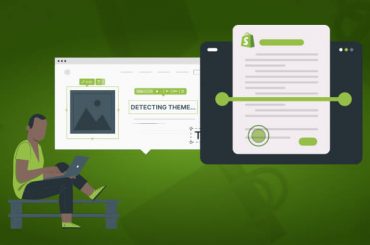What Is Ecommerce Website Development in 2024 – A Complete Guide
Last Updated | January 18, 2024
Table of Contents
The complexity of moving from traditional models to the digital sphere asks for tailored solutions. This is where we get to talk about what is ecommerce website development!
In this dynamic world, the key to unlocking online success depends on a strategic and well-executed approach to building an eCommerce platform. The same goes for maintaining the platform. In this blog, we’ll delve into the complete knowledge of e-commerce website development for your business. We’ll also see how that helps in overcoming challenges and achieving prosperity for you in the marketplace.
What Is eCommerce Website Development?
ECommerce website development is an in-depth method of creating and optimizing online platforms. The aim is to facilitate electronic transactions. At its core, this development aims to build a digital space where businesses can display and sell their products or services to a global audience.
This intricate process involves designing, programming, and configuring several elements. All that is necessary for a seamless online shopping experience. The components of an eCommerce website have crucial features.
For example, product pages are where businesses showcase their offerings with visuals and detailed descriptions.
Another one is the shopping cart function. It allows users to collect desired items before proceeding to the checkout. Calling it a pivotal step where transactions are completed securely would not be wrong. Their other essential elements involve inventory management, payment gateways, and user account systems.
Now, after knowing what is eCommerce website development, the question is, what does it bring to the table for you?
Firstly, it increases sales by providing a convenient and accessible platform for customers. The broader reach of the online presence ensures that businesses can tap into global markets, irrespective of geographical limitations.
Additionally, a well-crafted eCommerce site contributes to brand building, fostering customer trust and loyalty through a positive and efficient online shopping experience. In essence, it is a cornerstone for businesses aiming to thrive in the digital marketplace.
Steps to Develop an eCommerce Website
With the rise in online shopping, having an eCommerce website can help you reach a wider audience. Here are the steps to develop an eCommerce website:
Step #1: Thorough Planning and Research
To begin, it’s crucial to define your target audience. Understand who they are to tailor strategies and messages effectively. Articulate clear business goals, too. Setting specific, measurable goals will guide your actions and keep you focused on success.
Staying up-to-date with industry trends is essential for competitiveness and relevance. Keep a pulse on the latest developments and innovations in your industry. Adapt strategies and offerings to meet the evolving needs and preferences of your target audience.
By defining your target audience, articulating clear business goals, and staying up-to-date with industry trends, you’ll be well-equipped to navigate the dynamic business landscape and drive growth and success for your organization.
Step #2: Select the Right Platform
When analyzing options like Shopify, WooCommerce, and Magento, consider several factors that can greatly impact your website’s functionality and performance.
First, think about scalability. This determines how well the platform can accommodate the growth of your business. You want a platform that can scale with you.
Next, consider customization options. It’s important to ensure that the platform can be tailored to meet your specific needs. Customization is key.
Lastly, evaluate the ease of use of each platform. A smooth user experience is essential for both you and your customers. Make sure it’s user-friendly.
By carefully weighing these factors, you can make an informed decision and choose the right platform that aligns with your business goals. Set yourself up for success.
Step #3: Design and Development
To optimize the user experience, prioritize creating an appealing, user-friendly interface. This includes intuitive navigation, mobile responsiveness, and visually appealing aesthetics. Pay attention to these details, making it easier for users to navigate and engage with your content.
Implement a smooth, hassle-free checkout process. Streamline the steps to reduce cart abandonment and increase the conversion rate.
Remember, success lies in the details. Enhance the overall user experience and drive platform success.
Step #4: Effective Content and Product Management
Capture the attention of your audience by showcasing your offerings compellingly. Craft engaging product descriptions that highlight the unique features and benefits of your products.
Accompany these descriptions with high-quality images that showcase the products from different angles. This helps customers visualize their potential use and benefits. Provide relevant and informative content that educates and guides customers in their decision-making process.
Remember to regularly update and upgrade your product information. This keeps your site dynamic and relevant, ensuring that customers always have the most up-to-date and accurate details. By paying attention to these details, you can create a captivating and immersive shopping experience for your customers.
By following these steps, you can establish a solid foundation for developing an eCommerce website that aligns with your business goals.
Qualities of a Successful eCommerce Site
Successful eCommerce websites have the same qualities that contribute to their effectiveness in a competitive digital world. When considering what is eCommerce website development, it is important to highlight some key characteristics that make an eCommerce website successful. Here are some factors for you to consider:
User-Friendly Experience
Prioritizing user experience (UX) holds great importance. Plus, a good search functionality and a streamlined checkout process are equally valuable. After all, a seamless and enjoyable journey for users enhances satisfaction and retains customer visits.
One important element in UX is the search functionality. When users can easily find what they are looking for without any hassle. Surely, this wins customers. But, effective filters, categorization, and a clear layout of search results are needed to achieve this goal.
Flexible to Adaptation
Mobile responsiveness is non-negotiable in today’s diverse device landscape. A successful eCommerce store must adapt flawlessly to various screen sizes. This way, users can experience the site on smartphones, tablets, and desktops.
Mobile optimization can be a game changer. Since it not only improves user experience but also impacts search engine rankings. So, when designing an eCommerce website, it is crucial to predict how the site will function on different screen sizes.
Secure and Safe
Another important quality lies in security features. Remember, trust is one of the foundational elements. Implementing secure payment gateways and robust data protection measures instills confidence in customers. This trust in a brand is invaluable for long-term customer relationships.
The company is responsible for looking for options that ensure the safety and security of customers’ data. This not only helps in building trust but also protects your brand’s reputation. In short, it is a complete winning situation for both the parties.
High Ranking
What is the point of an exclusive site when it can not rank? Therefore, effective marketing strategies and search engine optimization (SEO) are essential for online visibility. By maintaining these qualities, successful eCommerce sites meet and exceed user expectations.
Hence, creating a lasting impact and establishing themselves as a trustworthy brand is highly preferable. Especially to reach desired destinations in the vast online marketplace.
What Do You Need to Build an eCommerce Website?
Designing an eCommerce site involves navigating various options according to different needs and skill levels. Here, we have described them in detail.
Skills and Expertise
DIY platforms, such as Shopify or Wix, offer user-friendly drag-and-drop interfaces. This enables people with minimal technical expertise to create a functional online store.
Its advantages include cost-effectiveness and speed of deployment. But we can’t ignore their limitations. As they lie in customization, they often restrict advanced features or unique design elements.
Professional Need
When it comes to complex needs, appointing a professional developer is beneficial. Developers are capable of making the eCommerce website meet specific requirements. Hence ensuring scalability and optimal performance.
The best part about any eCommerce site is its unlimited customization possibilities. Overall, allowing businesses to stand out in a competitive market. However, this option is more expensive and time-consuming than DIY platforms.
Agencies or Freelancers
Another avenue is connecting with agencies or freelance developers. This approach has both the advantages of professional expertise and potential cost savings. Agencies offer diverse skill sets. However, the freelancers offer specialized knowledge.
Yet, communication gaps and project management challenges may arise when working with multiple entities.
Essential Factors
These include the business’s budget, technical requirements, and desired level of customization. All these options offer a unique balance of ease, cost, and expertise. What else is the brand asking for? They are the basic yet proper set of requirements.
Hire an eCommerce Developer for Your Website
Working effectively with an eCommerce developer is crucial for a successful online store. Here’s how you can find yourself the best eCommerce website developer:
- Start by finding the right eCommerce developer with a proven track record in website development.
- Check portfolio reviews and ask for references to ensure their expertise aligns with your project requirements and expectations.
- Clearly define project timelines, milestones, and potential challenges to establish a productive collaboration.
- Thoroughly test the ecommerce website, prioritizing functionality, security, and user experience.
- Address any issues before the site goes live to provide a seamless user experience.
- Ongoing maintenance, including regular updates and security checks, is essential for a healthy eCommerce website.
- Maintain open lines of communication with the developer for post-launch updates and a successful partnership.
Build a Website for Your eCommerce Business
If you have all the answers to what is ecommerce website development, then begin the journey! A well-designed website is not an online catalog. Instead, it’s an influential tool to convert visitors to loyal customers.
Invest in a functional, secure, and visually appealing eCommerce website to drive business success. Remember to prioritize user experience and trust-building elements to create a lasting impact on your target audience.
With these qualities in place, you can confidently enter the competitive world of eCommerce and stand out from the rest. So find your perfect developer and start building your dream eCommerce website today!
Frequently Asked Questions
What Is eCommerce Website Development?
ECommerce web development creates and customizes online platforms for businesses. So that they can sell products and services. The process also includes integrating functionalities such as shopping carts, payment gateways, and product catalogs.
What Is Shopify eCommerce Development?
Shopify eCommerce development means the creation of eCommerce stores using the Shopify platform. The best part is that it offers customized solutions for online selling, such as store design, payment gateway integration, and product management.
What Does eCommerce Mean on Shopify?
Having a website on Shopify means building online eCommerce stores using the Shopify platform. This process renders tailored solutions for online sales. The solutions involve payment gateway integration, customizable store design, and efficient product management.
What Does an eCommerce Developer Do?
An eCommerce developer designs, develops, and implements online stores. Moreover, they handle technical aspects, like website functionality and performance, integrating payment gateways. While also maintaining data security and enhancing user experience to drive sales and customer satisfaction.
Is Shopify Good for Web Development?
Shopify excels as a web development platform. The reasons are many, for example, due to its offering user-friendly interfaces and robust e-commerce capabilities. Above all, it is ideal for businesses seeking a comprehensive, easy-to-navigate website that seamlessly integrates online selling functions.
Is Shopify Development Free?
Shopify development isn’t entirely free. Although Shopify offers a 14-day free trial, continued use requires a subscription. The development costs can also rise based on the complexity of your storefront and the use of premium themes or third-party apps.









